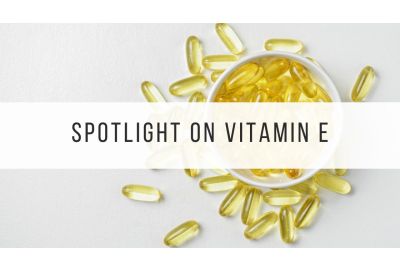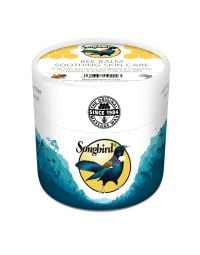Have you ever seen ‘tocopherol’ on the ingredients list of your cosmetic products? If you have a rummage through your bathroom cabinet and read the ingredient labels on your toiletries and cosmetics, you’ll probably find it’s a popular ingredient. But what is tocopherol?
Tocopherols are the major forms of vitamin E, and they’re commonly used in makeup and skincare products for their antioxidant benefits. Antioxidants prevent oxidative damage to cells by helping to remove ‘free radicals’. Free radicals can cause damage to your skin, tissues and cell membranes. The more you can protect your skin from the damage caused by free radicals, in theory the better your skin will look and feel. So, this is where vitamin E comes in.
Vitamin E is the name given to a family of oil-soluble antioxidants, and there are actually eight different forms of naturally occurring vitamin E: alpha-, beta-, gamma-, and delta-tocopherol, and alpha-, beta-, gamma-, and delta-tocotrienol. Of these eight types of vitamin E, alpha-tocopherol and ‘tocopheryl acetate’ are most commonly found in skincare products. In fact, alpha-tocopherol is the only form of vitamin E that’s recognised to ‘meet human requirements’, according to the National Institute of Health (NIH). Essentially, that means alpha-tocopherol is technically safe for humans to ingest.
If you ever see a “d” prefix (e.g. d-alpha-tocopherol), that indicates that the tocopherol was derived from natural sources. Whereas, if you see a “dl” prefix (e.g. dl-alpha tocopherol), that indicates that it was created from a synthetic base. However, it’s usually more common to just see ‘tocopherol’ or ‘tocopheryl acetate’ listed on ingredient lists, without any prefixes. Here at Songbird Naturals, we only ever use the natural forms of tocopherol and tocopheryl acetate. Natural tocopherol used in skincare products is often derived from sources like soy, rice bran or flax oils. Some research has shown that natural forms of vitamin E are more effective than their synthetic counterparts, although both have antioxidant properties.
Chemistry lesson aside, what are the benefits of adding vitamin E to cosmetics?
Vitamin E helps maintain healthy skin. It has significant antioxidant properties, which can help defend the skin from pollution, environmental stressors and damage from free radicals, which would otherwise weaken the skin. Unlike most other antioxidants, vitamin E is also very hydrating; it’s both a humectant (which helps your skin absorb water), and an ‘emollient’ (which helps to trap water in your skin). This makes it a popular choice in skincare products, as it can be helpful for a range of skin disorders, as well as aiding skin repair.
A list of vitamin E’s benefits for the skin include:
- Highly moisturising qualities and stops the skin from losing moisture
- Protects cells from damage due to its powerful antioxidant properties
- Helps soften skin, and relieve the symptoms of dry and flaky skin
- Strengthens the skin’s natural barrier
- Contains natural anti-inflammatory properties, which help to soothe and calm the skin
- Can visibly improve hyperpigmentation
- Provides some protection from UV exposure (but it’s not a substitute for sun cream)
- Can help fade scarring from acne
- Boosts cell turnover and regeneration, thus assisting the body’s natural healing processes for issues like sun damage, scars and burns
Another benefit of vitamin E in cosmetics is that it can be used as a preservative. Its antioxidant properties aren’t just good for the skin; they help to preserve the stability of delicate ingredients, such as oils that would otherwise go rancid too quickly.
At Songbird Naturals, we use a small amount of natural vitamin E (tocopherol) in all of our products, to act as a preservative for the natural oils we use in our waxes and balms. In addition, we use another natural form of vitamin E (tocopheryl acetate) in our Reflexology Waxes and our Bee Balm, for its skin nourishing properties. You can find the highest concentration of this vitamin E in our Bee Balm, which has been specifically formulated to be a soothing, all-purpose, healing skin balm.
Did you know that it’s also important to consume vitamin E in your diet, too? The richest sources of vitamin E include nuts, spinach, wholegrains, olive oil, and sunflower oil. Further proof that, when it comes to maintaining healthy skin, what you put in your body is just as important as what you put on your body.
So, in conclusion, if you see ‘tocopherol’ or ‘tocopheryl acetate’ on the ingredients list the next time you purchase cosmetic or skincare products, you’ll know that means it contains vitamin E. The higher up the ingredients list it is, the more likely it’s in there for its skin nourishing benefits. The lower down the list it is, the more likely it’s in there to act as a preservative.



